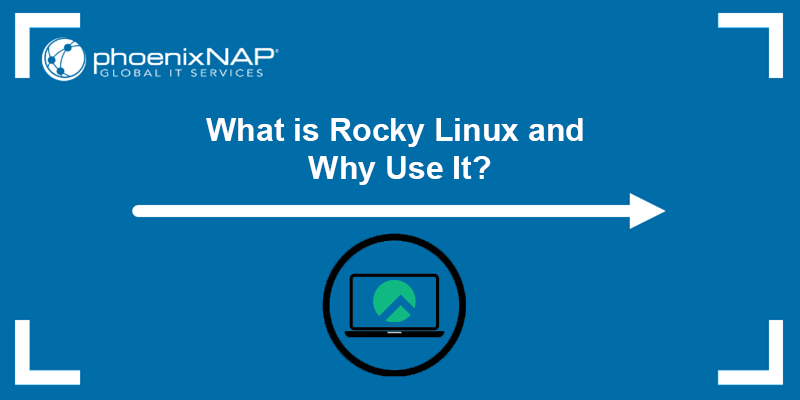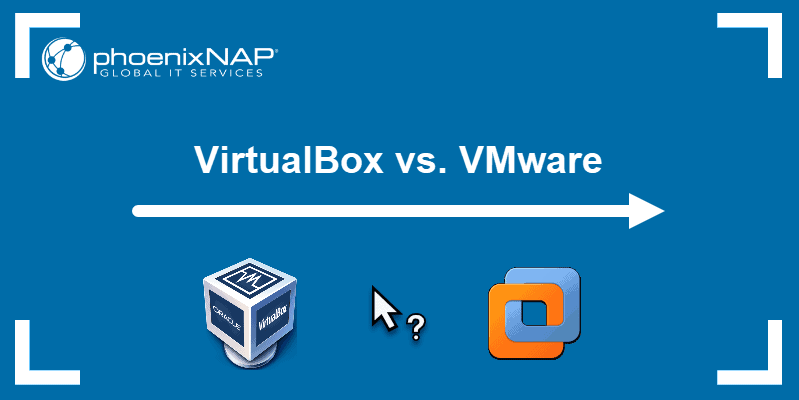Introduction
Rocky Linux is a free, open-source, server-oriented Linux distribution. It is a CentOS fork and a bug-for-bug Red Hat Enterprise Linux (RHEL) compatible distribution.
Since it is free, its popularity has been growing recently, and backed by the OS's stability, it is becoming one of the best options for server operating systems.
In this article, you will learn what Rocky Linux is and its benefits.

What is Rocky Linux?
Rocky Linux was founded in 2021 by Gregory Kurtzer, one of the co-founders of CentOS, after Red Hat discontinued CentOS. The OS is under intensive development by the community, and it is enterprise-ready, with regular updates and excellent stability. The latest version is 9.0. The lifecycle for each release is ten years at zero cost.
Rocky represents what CentOS used to be when it was established - a downstream distribution of Red Hat Enterprise Linux, stable, completely compatible with RHEL, and it is ideal for servers. Kurtzer took the RHEL open-source code and, using his background in high-performance scientific computing, created Rocky Linux as a CentOS doppelganger - but completely free.
The expertise and time required to produce the builds, servers, and repositories, required to create Rocky Linux are mostly funded by Ctrl IQ (CIQ). It is a company established by Kurtzer that provides commercial support for the OS.
Note: If Rocky Linux sounds interesting, try it out by installing it using VirtualBox or via VMware. Alternativly, check out our Rocky Linux vs CentOS to see how these two OS compare to each other and if Rocky Linux is a replacement for CentOS.
Is Rocky Linux an Alternative to CentOS?
When CentOS was created in the early 2000s, its goal was to be a binary-compatible and identical version of RHEL with a stable, point-release system. It included all the features of RHEL that made it a dominant enterprise-class Linux distribution, but without corporate support and for free.
Since it was open-source, CentOS offered RHEL's stability and performance without the added costs. Due to its popularity, Red Hat offered financial backing and acquired CentOS in 2014. The acquisition resulted in a new governance scheme for CentOS and a Red Hat majority on its board.
However, since CentOS significantly impacted RHEL subscriptions, the company decided to discontinue it in 2021 and replace it with CentOS Stream. The Stream distro would remain ahead of RHEL on the development branch, which means it will never be production-ready.
All the events caused CentOS to stop being a free replacement for RHEL, which is why Kurtzer decided to create an alternative for CentOS Stream. He produced an alternative for RHEL - Rocky Linux, and it is now what CentOS was at the beginning.
Rocky is separate from Red Hat's governance, being administered by the Rocky Enterprise Software Foundation. It follows RHEL's release numbering, just like CentOS did. The support is community-based, but also through the founder's CIQ company, Montavista, and OpenLogic.
Many members of the Linux community consider Rocky Linux a replacement for CentOS. To top that, the people behind Rocky have created easy and automated ways of migrating from CentOS to Rocky Linux.
The infographic below shows some key differences between Rocky Linux and CentOS:

Features of Rocky Linux
Being a rebuild of RHEL, Rocky Linux benefits from RHEL's lifecycle and promises active maintenance for the latest version until 2032. The stable source code makes it an excellent choice for a server OS. The OS has almost one hundred available mirrors and provides HTTP/S and RSYNC connections over a global CDN (Content Delivery Network).
Notable features include:
Stability
Rocky Linux's purpose is to replace CentOS, which means it focuses on offering CentOS's main advantage - stability. Rocky Linux is gaining users' trust by focusing on stability and ensuring the system runs smoothly and with no sudden updates.
Compatibility
Rocky Linux is 100% compatible with the Red Hat Enterprise binary code. The bug-for-bug compatibility vouches for the OS's performance, efficiency, and stability, which are some of RHEL's key features. Since its release, Rocky has fixed the issues related to container images and cloud-based offers.
Migrations from CentOS, AlmaLinux, and other distributions are also simplified using the migrate2rocky tool.
Open Source
Being open-source is one of the key features of Rocky Linux since it benefits the entire community. An open-source distribution based on stable RHEL code ensures a constant community flow of documentation, security management, and updates that focus on the users' needs.
Support
The OS's popularity is rising, which means community support is also increasing. Having a large and thriving community means that the OS will remain free and well-supported, and those who want can also purchase commercial support provided by several companies.
Note: Learn about Rocky Linux package managers and how to use them.
Drawbacks
As all operating systems, Rocky Linux also has some drawbacks:
Age
Rocky Linux is still in its initial stages, which is its main drawback. However, as the community grows and the project matures, it is becoming less of an issue. Still, some users are concerned about its future as its maintenance requires a lot of money and committed supporters for development and updates.
Slow Updates
Since Rocky Linux focuses on stability, the update cycle is slower compared to CentOS Stream. This may be a downside for developers who prefer frequent updates. However, it can be a benefit for users more focused on a stable system with few unexpected updates.
Who Should Use Rocky Linux?
Rocky Linux's target groups are private businesses and enterprises which need a reliable, user-friendly, and free Linux distribution. It also targets users looking for a viable alternative to CentOS, as it offers similar features.
Note: Read our article to learn everything about big data servers.
The OS integrates key functions of enterprise, hyperscale, cloud, and high-performance computing, making it a viable option for large organizations. All the features of Rocky Linux make it an equivalent and binary-compatible alternative to RHEL, but at no cost.
Rocky is also a good option for a web server since it is compatible with most control panels and it uses the Red Hat Enterprise Server resources. It can also function as an email server or VPN setup as it performs great in those areas, making it great for medium-sized businesses as well.
Lastly, beginners can also use Rocky Linux since all its versions are free to download and use, and it is user-friendly and easy to install.
The Future or Rocky Linux
The market needs a CentOS alternative that will provide a stable production-ready environment, and Rocky Linux is a strong candidate. It is too soon to tell, but Rocky seems to be here to stay considering it's based in RHEL.
The number of Rocky Linux users is rising, and a new version (9.0) was released in July 2022. Furthermore, Rocky is a community-driven distribution which means it won't suffer the same fate as CentOS.
Many large organizations have backed up and supported the development of Rocky Linux, including Google and Microsoft. Google launched a custom version of Rocky Linux for the Google Compute Engine, while Microsoft offers Rocky Linux on the Azure platform.
Note: Rocky is also available as a custom OS on phoenixNAP Bare Metal Cloud, allowing you to install it in RAM for blazing-fast performance.
Conclusion
If you are a former CentOS user looking for a replacement OS, check out Rocky Linux. It is a familiar ecosystem with all the features of CentOS, but stable and with a rising community. Being a CentOS clone, it has everything that made CentOS popular, including the development team.
Other users who are new to RHEL also have multiple reasons to try Rocky Linux, especially if they are looking for a stable OS that doesn't burden their budget.
If you want to compare Rocky Linux to other open-source Linux distributions, read our article Rocky Linux vs AlmaLinux and find out how they differ.

